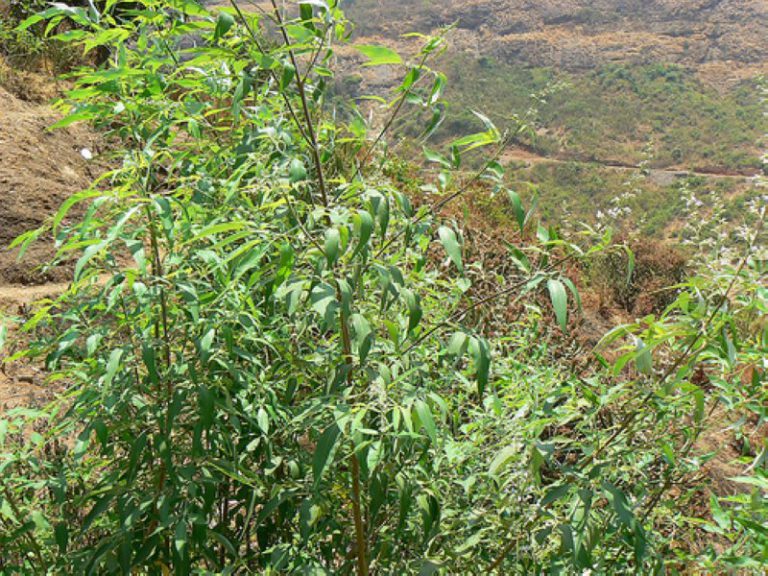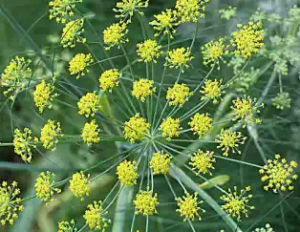NIRGUNDI – Vitex negundo – Ayurvedic Herb

LITERARY REVIEW
We come across the reference about nirgundi in kaiyadeva seperately indicated the properties of nirgundi flowers viz , pliharoga , gulma , kushta , sopha etc . He described its oil for vranashodhana . Dalhana describe (S.S.Ci.2/75) sephalika as raktha vrnta & sarada kusuma . This description specially indicate parijatha . Dalhana further described that harenuka as an aromatic substance . Susrutha (S.S.Ka. 2/5) included it renuka under poisonous fruits. Many modern writers have mentioned it as the fruits of Vitex negundo or Agnus castus linn. Nirgundi is described as analgesic , diuretic and emmanagague in ‘Indigenous drug of India’ . It decoction is used in the treatment of Beri-Beri (Vit. B1 deficiency). Fleming reported its anti-inflammatory properties . Europions used to sell it in the Mumbai market as the fomentation herb , its leafe oil is best for wound healing , pain .CNS disorders for external use .
VARIETIES
- Susrutha 2 types – svethapushpa , nilapushpa .
- Dalhana 2 types – nirgundi , sinduvara .
- Dhanvanthari nigandu ; 2 types – swetha , nila .
- Bhavamisra ; 2 types – svethapushpa , nilapushpi .
- Kaiyadeva ; 3 types – nirgundi , sinduvara , sephalika .
- Sodhala : 2 types – sinduvara , sephalika .
- Raja nigandu ; 3 types – sinduvara , nilanirgundi , sephalika .
- Nigandu rathnakara ; 2 types – karthari , aranya .
According to botany many species are mentioned . Vitex negundo linn has both type of flowers white & light blue coloured flowers . the leaves of these plant is dentate . another species is also there Vitex trifolia . It is mentioned that both sinduvara & nirgundi have similar properties & action .
SYNONYMS & INTERPRETATION
That which protect from number of disease . Sephali ; that which is liked by insects and flowers are blue in colour. Suvaha; The flowers are blue in colour or that which purifies the body. Sinduvara; It checks the accumulations of fluid in the body. Indrasurasa; The swarasa is an effective drug. . Sugandika; the leaves have aroma. Sheethasaha: a plant resistance to cold.
VERNACULAR NAMES
- Bengali : Nirgundi; Nishinda; Samalu
- Bontok : Liñgei
- Chinese : Huang jing
- English : Five-leaved chaste tree; Horseshoe vitex; Chinese chaste tree
- Filipino : Lagund
- Gujarati : Nagoda; Shamalic
- Hindi : Mewri; Nirgundi; Nisinda; Sambhalu; Sawbhalu
- Ifugao : Dabtan
- Ilokano : Dangla
- Kannada : Bile-nekki
- Malayalam : Indrani
- Marathi : Nirgunda
- Punjabi : Banna; Marwan; Maura; Mawa; Swanjan Torbanna
- Sanskrit : Nirgundi; Sephalika; Sindhuvara; Svetasurasa; Vrikshaha
- Sinhala: Nika
- Tamil : Chinduvaram; Nirnochchi; Nochchi; Notchi; Vellai-nochchi
- Telugu : Sindhuvara; Vavili; Nalla-vavili; Tella-vavili
SYSTEMATIC POSITION
SPERMATOPHYTA
ANGIOSPERMAE
DICOTYLEDONAE
GAMOPETALAE
BICARPELLATAE
LAMIALES
VERBENACEAE
PART USED
FLOWERING & FRUTING TIME
Plant flowers in june – august & fruits is december , january ,; Generally flowering stage begins during summers & rains and fruting during cold season .
CHEMICAL COMPOSITION
- PHENOL
- DULCITOL
- ALKALOID – VITRICINE
- Β- SITOSTEROL
- CAMPHENE
- ∞ & β- PINENES
- ANGOSIDE
- AUCUBIN
- CASTICIN
- ARTEMETIN
- ORIENTIN
PROPERTIES
Rasa : Katu , tiktha Guna : laghu , rooksha Veerya : ushna Vipaka ; katu
DOSHAGHNATHA
VATHA – KAPHAHARA
KARMA
- CHAKSHUSHYA
- KESYA
- KRIMIGHNA
- VRANAROPANA
Important Actions
For pacifying vata nerves, mind or joints. R-arthritis and hepatitis. In the ear for relieving pain, headaches, eczema, psoritic arthritis internally and externally.
Indications
Hair loss arthritis fever amavata, all vata conditiion joint pain, ear ache intestinal worm skin conditions improves memory tonic hepatitis
MODERN VIEW
PROPAGATION ; Shoot cutting , root suckers
MACROSCOPIC CHARACTERS: LEAVES
Size- shape : palmately compound , petiole 2.5 – 3.8 cm long Mostly trifoliate leaf , occasionally pentafoliate Surface ; globrous above , tomentose beneath Texture ; leathery Color; green Taste ; bitter Odor ; aromatic
USES
The roots, fruits, flowers, leaves and bark of nirgundi have great medicinal value and are used for medicinal purpose externally as well as internally. Externally, nirgundi decoction is used for steam bath for arthritis, joint pains and sciatica. Particularly, nirgundi is very effective in alleviating the low back pain. The dried leaves when smoked are said to relieve catarrh and headache. Oil prepared with the juice is applied to sinuses and scrofulous sores. Oil is used also as bathing oil for rubbing on the head and in cervical lymphadenitis. The oil is also found to be salutary for sloughing wounds and ulcers. In premature graying of hair and scalp infections like pediculosis and lice, the oil is applied with great benefit. Decoction of nirgundi leaves is an effective gargle in stomatitis and sore throat. The poultice of hot leaves applied on swollen and painful joints, effectively mitigates the pains. Medicated oil is beneficial in suppurative otitis. The tub-bath of the decoction of its leaves is rewarding in sciatica, epididymo-orchitis and uterine inflammations. Internally, nirgundi is salubrious in vast range of diseases. It is used in vitiated conditions of vata like sciatica, arthritis, headache, spondylosis as a pain killer. The leaves juice is given along with cow’s urine, as a panacea for splenic pathology, associated with ascites. Nirgundi is extremely beneficial in cough, asthma, bronchitis and inflammatory conditions of pleura. Being diuretic, it is valusble in strangury to facilitate the micturition. The skin affections associated with pruritus are effectively ameliorated with nirgundi. The juice of leaves combined with honey, alleviates fever. Nirgundi is an influencial herb in vitiated conditions of vata, like hysteria, epilepsy, insomnia, vertigo etc. and works well as a brain tonic as well. It is a good rejuvenating plant in general debility. It works well as a rasayana with silajita (Black Bitumen).
External use
A great analgesic, anti inflammatory, antibacterial, cleaning and healing wounds, hair tonic. Heated Nirgundi leaves are tied over the affected part (or poultice) headache, scrotal swelling, synovitis, arthritis pain and rheumatic arthritis. Decoction prepared from leaves used in tub bath for endometritis, colitis and orchitis. In these conditions reduces obstruction of blood and amakapha, increases perspiration, reduces oedema and also relieves pain. Gargles with decoction of leaves useful in pharyngitis, stomatitis, difficulty in deglutation and inflammation. Smoke of the dry leaves useful for headaches, sinusitus and common cold. Nirgundi oil best in wounds for dry cleaning, anti-infective and to remove foul smell. Oil is also useful in baldness.
Internal use
Circulatory system: White flowered Nirgundi used in oedema induced by kaphavata. As acts on the raktadhatu and alleviates vata and kapha, used in inflammatory conditions of liver and spleen. Mixture of leaf juice and cow’s urine an effective remedy for ascitis. Digestive system: As tikta, katu and ushna properties improves appetite and digestion. Useful in loss of appetite, anorexia, amadosha, hepatitis and is anthelmintic. Nervous System: An analgesic, brain tonic and alleviates vata, therefore useful in headache, sciatica, rheumatic arthritis, synovitis, improves memory. Respiratory system: By removing kapha from the respiratory passage, improves ventilation, therefore used in kapha kasa, asthma, pneumonia and pleurisy. Reproductive system: Improves menstral flow, therefore used in dysmenorrhoea and obstetric conditions. Skin: Valuable medicine for skin diseases, urtucarua and eruptions. Urinary system: Diuretic, hence useful in dysuria and anuria. In gonorrhoeal infection helps in passing urine smoothly. Ama pachana – digests ama. Artavajanana – menogouge. Balya – strengthening tonic. Chakshushya – good for vision. Keshya – good for the hair. Krumighna – destroys parasites. Kustaghna – skin conditions. Medhya – brain tonic. Mutrajanana – diuretic. Rasayana – rejuvenative. Shotahara – anti-inflammatory Vatahara – pacifies vatav. Vedanasthapana – removes pain. Vishaghna – anti-poison. Yakrituttejaka – liver regulator
THERAPEUTIC USES
- IT IS USEFULL ALL TYPE OF SOTHA LIKE PHUPHUSAVARNASOTHA, UDARAVRANASOTHA, SANDISODHA, AMAVATHIKA SANDISOTHA, ANDASOTHA ETC. THE LEAFE PASTE IS WARMED & APPLIED ON IT.
- IF IT IS USED IN KARANJA , NIMBA & DATHURA LEAVES IT HAS BITTER EFFECT.
- IN KAPHAJA JWARA , PHUPHUSAPAKA ,PHUPHUSAVARANASODHA , THE SWARASA OF THE LEAVES OR KWATHA PREPARED FROM THE LEAFE IS GIVEN WITH PIPPALY INTERNALLY .
- IN PRATHISYAYA AND GALASOTHA , THE LEAVES ARE USED FOR DHUMRAPANA .
- THE KWATHA GIVEN INTERNALLY WITH PIPPALI.
- IN AMAVATHA NIRGUNDI, TULASI,BRUNGARAJA SAWARASA IS GIVEN WITH AJAMODA CHURNA.
- IN GRIDRASI A KWATHA PREPARED WITH THE LEAVES IS GIVEN INTERNALLY AND FOMENTATION IS GIVEN WITH THE LEAVES TO THE PART.
- IN KRIMI THE PATHRA SAWARASA GIVEN INTERNALLY.
- IN SIRASULA THE PATRAKALKA IS APPLIED ON THE FOREHEAD & THE PHALA CHURNA IS USED FOR NASYA KARMA.
RESEARCH STUDY
- Ecbolic property is reported.
- Anti – cancer activity is reported.
- Antitumer &anti microbial substance are reported.
- Analgeric effect of leafe extract is reported.
- The ethyle acetate extract at a dose of 50mg/kg orally produced definite anti-inflammatory effect against carrageenin . SHT & bradykinin indused oedema.
- The essential oil from leaves showed antifungal activity against tichoderma vividae. Fusarium helminthosporium and limited activity on bacteria.
- Vitex oil showed mosquito reppellence activity.
- Hepato proctive activity is reported ccl4 indused liver damage in rats.
- 50gof coarse leaf powder was boiled in 800ml of distikked water till the volume is redused to 100& was filtered through a thick cloth. After cooling 1.5ml of total watery extract was administered to albino rats which were induced with arthritis by using formaldehyde. Significant anti-arthritic activity is shown by nirgundi.
DOSAGE
Leaf juice : 10-20ml Root bark powder : 3-6g Seed powder : 3-6g FORMULATIONS
- Nirgundi taila
- Nirgundi kalpa
- Nirgundi ghritha
- Nirgundi guggulu
- Vatagajankusha rasa
- Dashamoola thaila
- Vishatinduka thaila
- Mahavisagarbha taila
- Mahavatavidhvamsana rasa
- Trivikrama rasa
- Tribhuvana rasa
- Manasamritha vataka
SUBSTITUTE & ADULTERENCE
The mula is frequently adulterated by the species of stems , which are somewhat quadrangular , having a finely hoary downy surfaces of grey colour.









